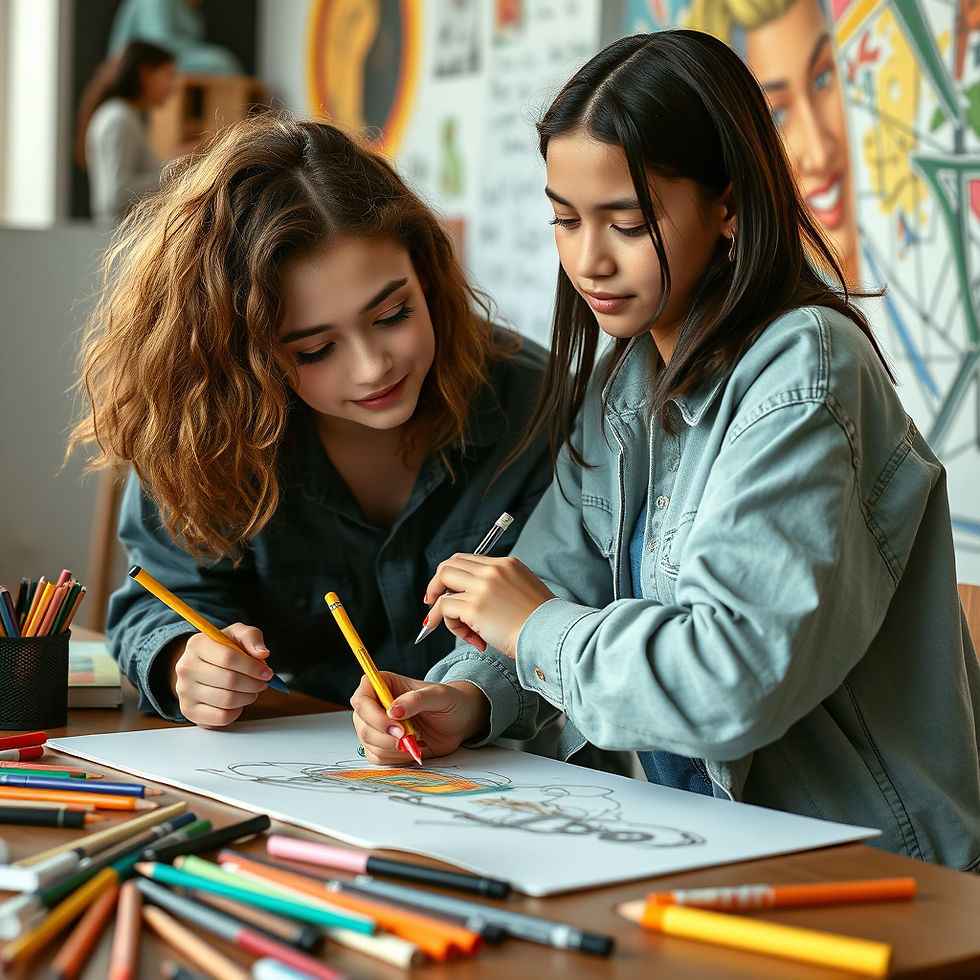Finding Art Inspiration in Nature
- J.M. Lueders

- Oct 30
- 3 min read

Wander outdoors and allow nature to inspire your art! From tranquil sketch walks to lively plein air painting sessions, the natural world provides limitless inspiration and colors to discover. Whether you're a seasoned artist or just starting with a pencil, immersing yourself in nature can rejuvenate your mind, stimulate your imagination, and invigorate your art. Being outside helps artists in discovering new ideas. Nature is rich with colors, light, texture and movement, all of which can inspire creativity. Whether you enjoy sketching, painting, or simply exploring, spending time outdoors can transform your perspective of the world.
Why Nature Inspires Artists
Nature is always changing. The light shifts, clouds move, and shadows change shape. By observing these details, you learn to be aware. This also helps you feel more connected to your art.
Making art outside is very different from using photos. You can feel the breeze on your face, smell the fall leafs, and hear the song birds while you create. These experiences make your art come alive. Many famous artists, like Claude Monet and Georgia O’Keeffe, found inspiration in nature. You can too!

(Oil Painting by Claude Monet)
Easy Ways to Create Outside
You don’t need a lot of gear to make art outdoors. A small sketchbook, pencils, and an open mind are enough to get started.

1. Go on a Sketch Walk
Take a walk through your neighborhood, a park, or even your backyard. Stop when something catches your eye — a tree, a flower, or the way light hits a wall. Make quick sketches to capture what you see. These small drawings can become ideas for bigger pieces later.
2. Try Plein Air Painting
“Plein air” means painting in the open air. Find a comfortable spot with an interesting view — maybe a garden, a lake, or a city street. Paint what you see in the moment. Don’t worry about making it perfect. Focus on light, color, and mood instead of small details.
3. Visit the Same Spot at Different Times
Morning light looks different from afternoon or sunset light. Visit the same place at different times of day and notice how the colors change. This helps you understand how light and shadow work.
4. Collect Natural Objects
If you can’t paint outside, bring a little of nature home. Pick up a few leaves, flowers, or shells (only where it’s allowed). Use them as still-life subjects for sketching or painting later.
5. Take Photos for Reference
If you find a great scene but can’t stop to draw, snap a few photos. Later, use them for practice or to inspire a painting. Try to combine photos with live observation when you can.
Enjoy the Process
Outdoor art is about enjoying the moment, not making something perfect. You might finish a piece — or just enjoy sketching for fun. The goal is to slow down, look closely, and connect with your surroundings.
Don’t worry if people watch or if the wind moves your paper. Every drawing teaches you something new.

Helpful Tips
Check the weather before heading out.
Pack light so it’s easy to move around.
Bring water, snacks, sunscreen and phone.
Respect nature. Leave no trash and stay on paths.

Let Nature Be Your Teacher
Every time you explore outside, you’ll find new shapes, colors, and textures to inspire your art. The more you draw or paint outdoors, the more confident and creative you’ll become.
So grab your sketchbook, step outside, and let the world around you spark your imagination.
#artinspiration, #natureart, #pleinairpainting, #outdoorart, #sketchingoutside, #artandnature, #artistlife, #creativejourney, #paintoutdoors, #arttherapy, #naturelovers, #artpractice, #landscapepainting, #sketchbookart, #watercolorpainting, #acrylicpainting, #artmotivation, #explorecreatively, #natureinspired, #artcommunity, #paintingfromlife, #creativeexploration, #artblog, #artisttips, #arteducation




Comments